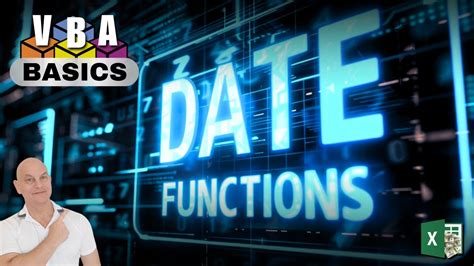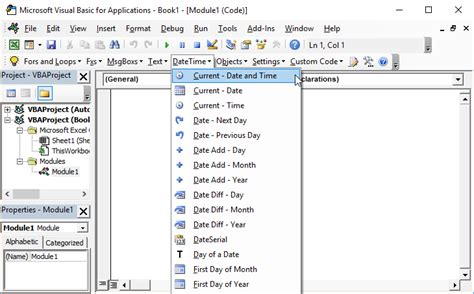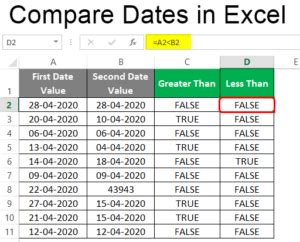Intro
Master comparing dates in VBA with ease. Learn how to effortlessly compare dates in Excel VBA using practical examples and expert tips. Discover date formatting, date functions, and comparison operators to streamline your workflow. Improve your VBA skills and boost productivity with this comprehensive guide to date comparison in VBA.
When working with dates in VBA, it's essential to understand how to compare them accurately. Dates can be a bit tricky, especially when dealing with different formats and time zones. In this article, we'll break down the best practices for comparing dates in VBA, making it easier for you to work with dates in your applications.
Understanding Date Formats in VBA

Before we dive into comparing dates, let's quickly review how VBA handles date formats. VBA stores dates as a serial number, starting from January 1, 1900, which is considered day 1. This means that any date can be represented as a numerical value, making it easier to compare dates.
VBA supports various date formats, including:
dd-mmm-yyyy(e.g., 12-Jan-2022)mmm-dd-yyyy(e.g., Jan-12-2022)yyyy-mm-dd(e.g., 2022-01-12)
When working with dates, it's crucial to ensure that the date format is consistent throughout your application.
Using the `Date` Data Type
When comparing dates, it's best to use the Date data type. The Date data type stores dates as a serial number, making it easier to compare dates.
Dim startDate As Date
Dim endDate As Date
startDate = #1/1/2022#
endDate = #12/31/2022#
If startDate < endDate Then
' Start date is earlier than end date
End If
Comparing Dates in VBA

Now that we've covered the basics of date formats and the Date data type, let's move on to comparing dates in VBA. There are several ways to compare dates, and we'll cover the most common methods.
Using the <, >, =, <=, >= Operators
You can use the standard comparison operators to compare dates.
If startDate < endDate Then
' Start date is earlier than end date
End If
If startDate > endDate Then
' Start date is later than end date
End If
If startDate = endDate Then
' Start date is equal to end date
End If
Using the DateDiff Function
The DateDiff function calculates the difference between two dates in a specified interval (days, months, quarters, or years).
Dim daysDiff As Long
daysDiff = DateDiff("d", startDate, endDate)
If daysDiff > 0 Then
' Start date is earlier than end date
End If
Using the Date Functions
VBA provides several Date functions that can be used to compare dates, including:
Date: Returns the current date.DateAdd: Adds a specified interval to a date.DateDiff: Calculates the difference between two dates.DatePart: Returns a specified part of a date (day, month, year, etc.).DateSerial: Returns a date serial number for a specified year, month, and day.
If DateAdd("d", 1, startDate) = endDate Then
' Start date is one day earlier than end date
End If
Common Issues When Comparing Dates in VBA

When comparing dates in VBA, there are several common issues to watch out for:
- Date format inconsistencies: Ensure that the date format is consistent throughout your application.
- Time zone differences: Be aware of time zone differences when comparing dates across different regions.
- Leap year issues: VBA handles leap years correctly, but be aware of potential issues when working with dates that span multiple years.
Best Practices for Comparing Dates in VBA

To avoid common issues when comparing dates in VBA, follow these best practices:
- Use the
Datedata type: Always use theDatedata type when working with dates. - Be consistent with date formats: Ensure that the date format is consistent throughout your application.
- Use date functions: Use VBA's built-in date functions to perform date calculations and comparisons.
- Test thoroughly: Thoroughly test your date comparison code to ensure it works correctly in all scenarios.
Gallery of Date Comparison Examples
Date Comparison Examples






Conclusion
Comparing dates in VBA can be a bit tricky, but by following the best practices outlined in this article, you can ensure that your date comparison code is accurate and reliable. Remember to use the Date data type, be consistent with date formats, use date functions, and test thoroughly. By doing so, you'll be able to write robust and efficient date comparison code in VBA.
